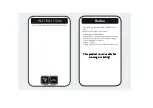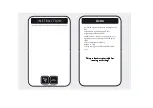
30
Installation
When installing your music or language lab, adhere to local building and electrical codes. If you are not familiar with local
building regulations for the installation of electrical equipment in your school or studio, seek assistance from maintenance
personnel, electrical contractors, and/or local government (county or township) offices for information.
The Planning Stage:
The more time and thought you give to planning your music or language lab, the fewer problems you are likely to face when
installing and using it in a teaching situation. The checklist below will assist you in preliminary planning. We recommend that
you use the checklist to design a teaching environment that will meet your needs.
Before you begin, consider the following:
•
Allow for future expansion: If possible, leave sufficient room for additional equipment and cabling. The GEC5
allows for easy expansion of additional student stations, up to 32 total.
•
When planning teacher and student workstations, don’t forget that some instruments are freestanding and
others require stands, which add to their length, width, and/or depth.
•
Take into account student sight lines. It will be important for students to see the Teacher, LCD projector
screen, whiteboard, and other teaching aids.
•
If students are to work and perform in duets, quartets, or customized groups, make an effort to place
student keyboard/workstations so that students within groups can easily establish eye contact.
•
Ensure that the teacher can easily access his or her instrument, as well as external audio equipment (such
as additional instruments, computer/keyboard, digital recorders, CD players/burners, etc.).
•
Position the room speakers so that the Teacher, as well as the Students can hear them
Site Plan Checklist:
1.
Diagram the dimensions of the physical site where the GEC5 will be located. Make sure that the diagram is
drawn to scale.
2.
Note on the diagram the placement of all doors, windows, AC outlets, and Ethernet drops (if there will be
computers using a wired internet connection).
3.
List the equipment that will be used by the teacher including the Teacher Unit, teacher’s instrument, any
additional MIDI devices/instruments, computer, and audio accessories such as tape decks, CD
players/burners, stereo amplifier/receiver, self-powered monitors, and/or speakers.
4.
How many student stations will the lab contain?
5.
List the equipment that will be used by each student.
6.
What are the approximate dimensions of each student station? Include the student bench or chair, allowing
sufficient space between the instrument and bench for the student to be seated comfortable and for the
teacher and other students to walk between stations.
7.
Draw to scale a diagram of teacher and student workstations, as well as all additional audio and/or MIDI
accessories.
8.
Once the teacher station and student stations are positioned in the diagram, add AC and CAT5 Cable
routings. Finally, add the cable routings for the audio accessories (such as tape decks, CD players/burners,
stereo amplifiers, etc.).
TIP:
I suggest using seats with backs. Students often find piano benches without backs rather uncomfortable if the class
lasts more than 30 minutes.







































